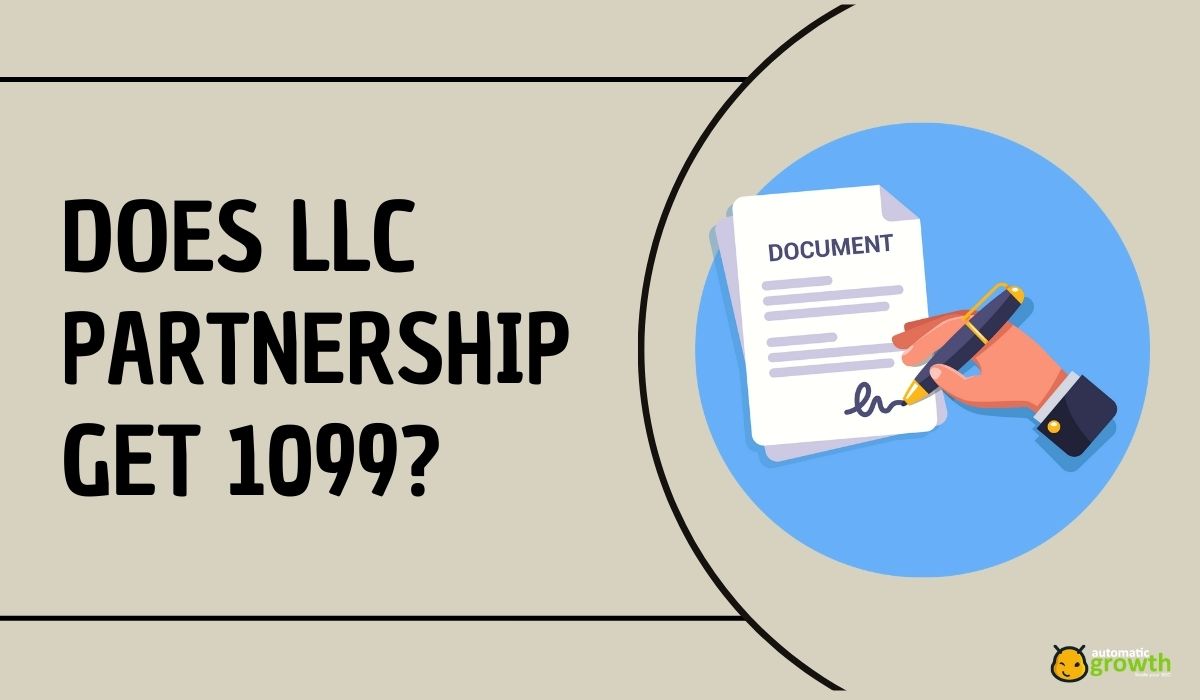A healthy backlink profile is vital for your website's search engine rankings and overall online visibility. However, maintaining a strong backlink profile can be challenging, as potential issues can arise and harm your website's reputation and performance.
In this blog, we will delve into common problems that may arise in your backlink profile and provide you with valuable tips and strategies to address and resolve them. By understanding and proactively managing your backlink profile, you can optimize your website's SEO efforts and achieve better search rankings. Let's dive in and unlock the secrets to a robust backlink profile that propels your online success.
Identifying Potential Issues In Your Backlink Profile
A healthy backlink profile is crucial for your website's search engine rankings and overall online visibility. However, building and maintaining a strong backlink profile is not an easy task, as there may be potential issues that can harm your website's reputation and performance. In this guide, we will discuss the primary potential issues in your backlink profile and provide tips for resolving them.
Low-Quality Or Spammy Backlinks
Low-quality or spammy backlinks are links coming from websites with low domain authority, poor content, and a bad reputation. These backlinks can have a negative effect on your website's search engine rankings, as search engines like Google may view them as an attempt to manipulate your website's ranking.
To identify low-quality or spammy backlinks, you need to do a backlink audit using tools like Ahrefs, SEMRush, or Moz Link Explorer. These tools will provide you with a list of backlinks to your website along with the domain authority and other metrics.
Once you've identified the low-quality backlinks, you can take the following steps to resolve this issue:
-
Request removal: Reach out to the website owners and request them to remove the low-quality backlink. However, this might not always work, as some website owners might ignore your request or demand a fee for link removal.
-
Disavow: If you're unable to get the backlinks removed, you can use Google's Disavow Tool to inform Google that you don't want those links to be considered while evaluating your website's backlink profile.
Unnatural Anchor Text Distribution
Anchor text is the visible, clickable text in a hyperlink. Having an unnatural anchor text distribution can raise suspicion that you're trying to manipulate your website's rankings through backlinks. For example, having too many backlinks with the same anchor text or using keyword-rich anchor text excessively can be considered unnatural.
To avoid unnatural anchor text distribution, you should:
-
Analyze your backlink profile and identify the anchor texts that appear too frequently or are overly optimized.
-
Diversify your anchor text. Use a mix of branded, naked URLs and keyword variations as anchor texts so your backlink profile appears natural.
-
In case you find over-optimized anchor texts, try to get them changed through outreach or by updating the linking content yourself if it's within your control.
Over-Optimized Links
Over-optimized backlinks are those that have been created with the sole purpose of increasing your website's search engine rankings. These links can be harmful to your backlink profile if the majority of your links are built using tactics that are against Google's Webmaster Guidelines.
Identifying over-optimized links can be done by assessing the quality of websites linking to you, checking if they use black-hat SEO tactics, and reviewing the relevance of the linking content. To fix over-optimized links, you should:
-
Request the removal of links from websites engaging in black-hat SEO.
-
Diversify your link-building strategy by focusing on quality, relevance, and natural link acquisition methods like content marketing, guest blogging, and influencer outreach.
-
Disavow any remaining over-optimized links that you're unable to remove or update.
Links From Irrelevant Websites
Getting backlinks from irrelevant websites can hurt your website's SEO performance, as it may appear to search engines that you're building unnatural links. To fix this issue, you should:
-
Analyze your backlink profile to identify links from irrelevant websites. Use tools like Ahrefs, SEMRush, or Moz to understand the websites' relevance to your niche.
-
Request the removal of links from irrelevant websites, politely explaining that their website's content doesn't align with your website's theme and that you'd like the link removed.
-
Disavow any remaining irrelevant links that you're unable to get removed.
By proactively addressing these potential issues in your backlink profile, you can maintain a healthy and robust backlink profile that helps your website rank higher in search results and improves its overall online visibility.
How to Address and Fix Backlink Profile Issues
Backlink profiles are an essential aspect of any website's SEO strategy, and having a healthy one can significantly improve your search engine rankings. However, low-quality or harmful backlinks can negatively impact your website's SEO performance. In this article, we will discuss how to address and fix common backlink profile problems, including disavowing harmful links, reaching out to webmasters for link removal, updating anchor text, and building high-quality links.
Disavowing Harmful Links
Disavowing links can help you take control of your backlink profile by telling search engines to ignore specific links that might be hurting your website's search engine ranking. Google's Disavow Tool enables site owners to submit a list of links they believe are negatively affecting their site's performance, and Google will then overlook these links when assessing the site's backlink profile.
To disavow harmful backlinks, follow these steps:
-
Identify low-quality or spammy backlinks using a backlink analysis tool like Ahrefs, SEMrush, or Moz.
-
Create a list of the harmful backlinks you want to disavow using a plain text file.
-
Upload the disavow file to Google's Disavow Tool, found in Google Search Console.
Keep in mind that this process should be used cautiously, as disavowing the wrong links can hurt your site's rankings instead of improving them. Make sure to double-check the links you plan to disavow and consult with an SEO expert if you're unsure.
Reaching Out to Webmasters for Link Removal
Before opting to disavow a link, it's a good idea to reach out to the webmaster of the site containing the concerning backlink and request that they remove it. This approach is preferable to disavowing because it results in the complete removal of the problematic link, whereas disavowing simply may ignore the backlinks during the ranking process.
To request link removal, follow these steps:
-
Identify the webmaster's contact information using tools like WHOIS or by searching the website for a "Contact" page.
-
Draft a polite, professional email explaining that you would like the backlink removed due to concerns about its impact on your site's SEO. Be specific about which link you're referring to and where it's located on their site.
-
Follow up with the webmaster if they don't respond within a week or two. If you still receive no response or they refuse to remove the link, consider using the disavow method.
Updating Anchor Text
Anchor text diversity is crucial for a healthy backlink profile. Over-optimization of anchor text with targeted keywords can result in search engine penalties, so it's essential to maintain a natural mix of anchor text in your backlinks.
To update anchor text, you may either reach out to webmasters and request changes or modify it yourself if you have control over the linking site. Keep in mind that varying anchor text should include a mix of the following:
-
Branded anchor text (e.g., your domain name)
-
Generic anchor text (e.g., "click here")
-
Long-tail keyword anchor text
-
LSI (latent semantic indexing) terms related to your main keywords
Building High-Quality Links
Improving your backlink profile isn't just about removing or disavowing harmful links; it's also essential to build high-quality links that positively impact your site's rankings.
Effective strategies for building high-quality backlinks include:
-
Creating valuable, shareable content like blog posts, infographics, and videos.
-
Guest posting on reputable websites within your niche.
-
Engaging in influencer partnerships, sponsorships, or collaborations.
-
Reaching out to bloggers or journalists for coverage of your products, services, or events.
-
Participating in industry forums and social media communities to obtain organic backlinks and enhance your reputation.
By addressing and fixing backlink profile issues, you'll improve your website's SEO performance, increase organic traffic, and establish your online presence as a trusted, authoritative source.
Monitoring Your Backlink Profile Regularly
Regular monitoring of your backlink profile is a crucial aspect of maintaining your website's search engine ranking. Strong and authoritative backlinks play a significant role in showing search engines that your site has valuable and relevant content. On the other hand, low-quality or spammy backlinks can negatively affect your website's ranking. In this section, we will discuss the importance of monitoring your backlink profile and the steps to set up alerts for new backlinks, conduct regular backlink audits, and adopt a proactive link building strategy.
Setting Up Alerts for New Backlinks
One essential aspect of backlink profile monitoring is being aware of when new backlinks are added to your website. Setting up alerts for new backlinks helps you keep track of which websites are linking to your content, enabling you to analyze their quality and relevance. Alerts also enable you to detect negative SEO attacks or spammy backlinks early on, allowing you to take action before these links cause significant harm to your site's ranking.
There are several tools available for setting up backlink alerts, including Google Search Console, Ahrefs, and SEMrush. To set up alerts using Google Search Console, login to your account, select your website and navigate to "Links" in the left-hand menu. Here, you can observe your total number of external links and the websites linking to you the most. While Google Search Console doesn't provide real-time alerts, it’s still a valuable tool for monitoring your backlinks periodically.
Ahrefs and SEMrush offer more advanced features for monitoring backlinks, including real-time alerting systems directly to your inbox. By configuring these alerts, you can be informed whenever new backlinks are added to your site, allowing you to assess their quality and decide whether to take any action.
Conducting Regular Backlink Audits
Regularly conducting backlink audits is another critical component of maintaining a healthy backlink profile. A backlink audit is the process of analyzing all the backlinks pointing to your website, evaluating their quality, and identifying any detrimental links that should be removed or disavowed.
Tools like Ahrefs, Moz's Link Explorer, and Majestic can help in conducting comprehensive backlink audits. These tools provide you with the data necessary to assess the quality of backlinks pointing to your site, such as their domain authority, anchor text, and the number of backlinks from each referring domain.
When conducting a backlink audit, ensure that you regularly analyze the following factors:
-
Quantity: Track the total number of backlinks pointing to your site and identify any noticeable fluctuations.
-
Quality: Evaluate the quality of the backlinks based on factors like domain authority, relevance, and whether the linking site is trustworthy.
-
Toxic links: Identify any links from low-quality, spammy, or irrelevant websites that may be harming your site's reputation.
Based on your observations from the backlink audit, take appropriate action to maintain a healthy backlink profile. This may involve reaching out to owners of low-quality websites and requesting them to remove the backlink or using Google's Disavow Tool to disassociate your site from such links.
Adopting A Proactive Link Building Strategy
In addition to regular monitoring and backlink audits, adopting a proactive link building strategy is essential for maintaining a strong backlink profile. Proactive link building involves creating high-quality content and using various techniques to acquire high-authority, relevant backlinks that will benefit your website's ranking.
Some proactive link building strategies include:
-
Guest posting: Reach out to authoritative websites in your niche and offer to create compelling, useful content for their audience in exchange for a backlink to your site.
-
Outreach: Identify websites that have mentioned your brand or content without linking and request them to add a backlink.
-
Social media promotion: Share your content on social media platforms to increase its exposure and the likelihood of generating organic backlinks.
-
Content creation: Focus on creating valuable, share-worthy content that appeals to your target audience and attracts high-quality backlinks naturally.
By integrating these techniques into your link building strategy, you can continually acquire authoritative backlinks, strengthen your backlink profile, and maintain your website's search engine ranking.
Frequently Asked Questions
What is the importance of analyzing your backlink profile?
Analyzing your backlink profile is crucial for understanding the quality and potential impact of the links pointing to your website. This process can help identify potential issues, enabling you to correct them and improve your search engine ranking and overall website performance.
What is the role of anchor text in a backlink profile analysis?
Anchor text (the clickable text within a hyperlink) plays a crucial role in conveying information to search engines about the linked content. Analyzing anchor text distribution in your backlink profile helps identify over-optimized or unnatural link patterns that can negatively affect your website ranking.
Can sudden changes in backlink numbers be a cause for concern?
Yes, sudden changes in backlink numbers, either an increase or decrease, can signal potential issues. Rapid spikes may indicate spammy or low-quality links being added, whereas sudden drops might suggest unnatural link deletion or removed backlinks. Monitoring these changes and addressing any issues is essential.
How does disavowing links work, and when should it be done?
Disavowing links is a process wherein you inform Google not to consider specific backlinks when assessing your website. It should be performed when you have a considerable number of harmful, spammy, or low-quality links that cannot be removed through contacting the website owners.
















